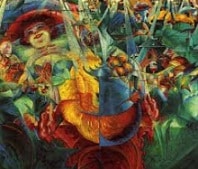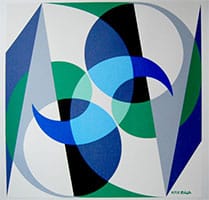 Futurism is a concept that can be used in different ways. The term refers to speculation about the future that is carried out without any scientific or rational basis.
Futurism is a concept that can be used in different ways. The term refers to speculation about the future that is carried out without any scientific or rational basis.
For example: “If I wanted to do futurism, I could say that next year I am going to become a doctor, but in reality I didn't even complete half of my degree,” “I don't think there is a plan for man to set foot on earth again.” Moon in the short term: it seems to me that it is simple futurism,” “The president did futurism and maintained that the economy will grow more than 10% in the next five years.”
Futurism is also called a movement promoted by the Italian writer Filippo Tommaso Marinetti at the beginning of the 20th century , whose essence consisted of the artistic expression of the progress of modern societies and technology . In the manifesto of futurism, Marinetti extolled the “love of energy” and the “aggressive character,” praising war and revolutions and condemning moralism, academies, libraries and museums.
The manifesto of futurism was published in Le Figaro , a French newspaper of the time, in 1909, with the motto "Freedom for words." The type of beauty he presented was different from what existed until then, since it was based on the exaltation of violence and speed. Futurism adopted propaganda as a form of communication, leaving behind the distance that existed between design and art.
The works of futurism, whether developed within the framework of poetry, plastic arts, cinema, architecture or music, are based on the exaltation of movement and machines . Regarding painting, futurism appeals to geometric figures and color to represent speed , painting objects in different positions or blurring them.
In other words, futurism flourished in all artistic disciplines and influenced several people who later created their own modernist movements. The two countries in which its impact was greatest are Italy and France.
From the futurism that emerged in Italy, Russian futurism developed, a trend with its own particularities. The Russians, like the Italians, valued speed and dynamism, but they turned more to literature than to the plastic arts.
 Once the First World War ended, futurism lost a lot of strength, although its restless and murmuring essence was reflected in Dadaism, postmodern graphic design , modern typography and concretism.
Once the First World War ended, futurism lost a lot of strength, although its restless and murmuring essence was reflected in Dadaism, postmodern graphic design , modern typography and concretism.
In addition to Marinetti, notable artists of Futurism include the following:
* Giacomo Balla : he was an Italian painter who sought to capture in his work the technical and scientific advances of his time through images removed from nature. Although he did not venture into total abstraction, he was mainly concerned with the dynamism of forms , the chromatic spectrum and the location of light;
* Carlos Carrá : another painter from Italy. He traveled to Paris in 1900 with a contract to decorate the World's Fair. His next destination was London, and throughout this trip he learned many of the concepts that characterized his art. Shortly after returning to his homeland he met Marinetti, with whom he later signed the first manifesto of futurism;
* Umberto Boccioni : an Italian sculptor and painter considered the greatest exponent of futurism. Without leaving aside the Cubist influence, he incorporated elements of simultaneity and dynamism in his work, through the representation of spaces and forms that move at the same time in opposite directions.
